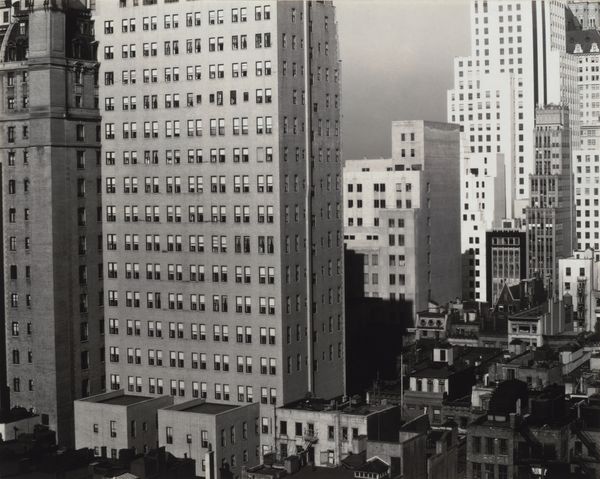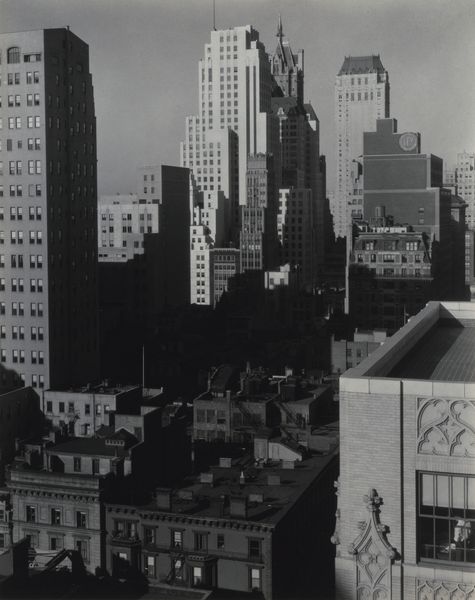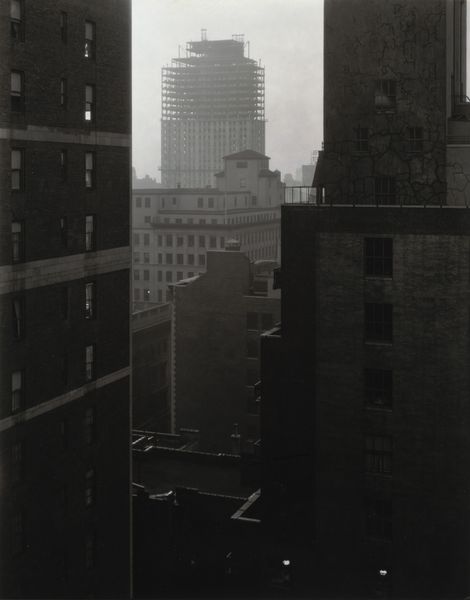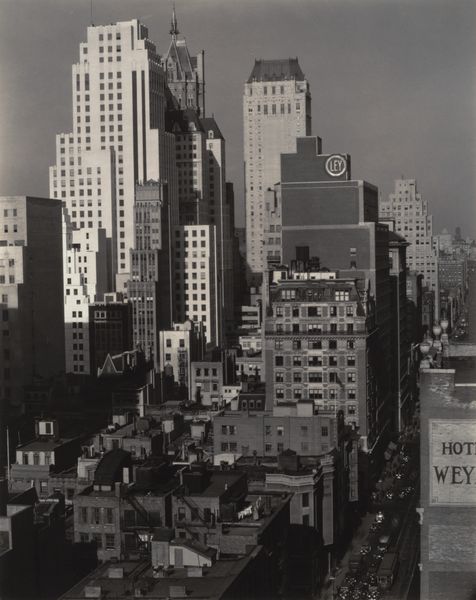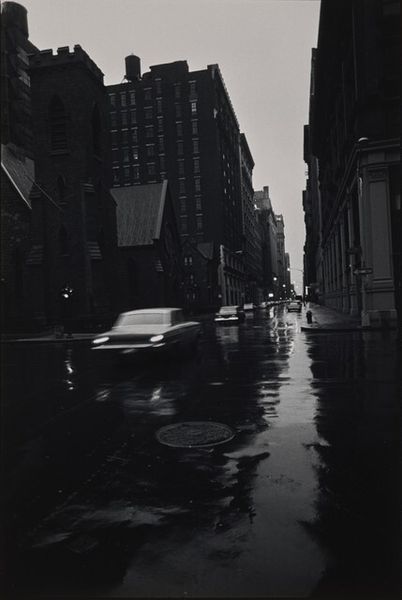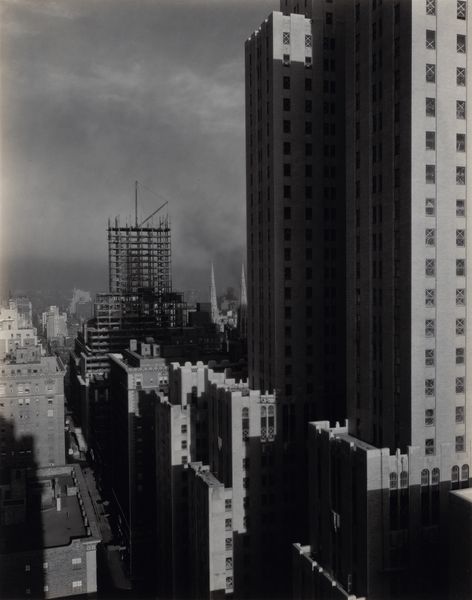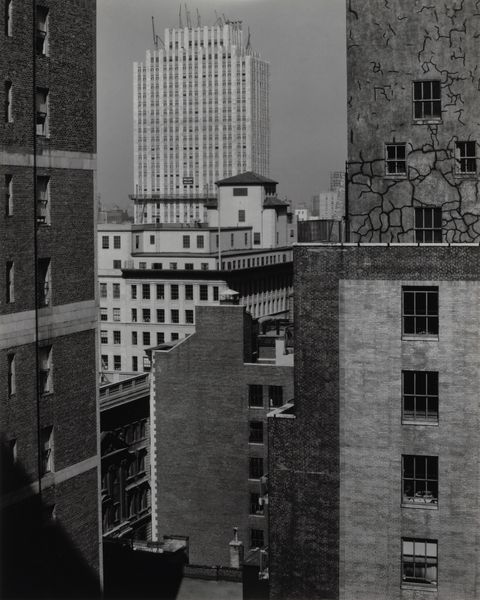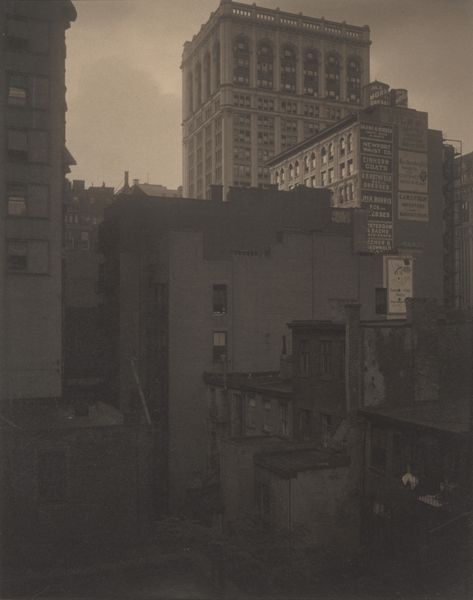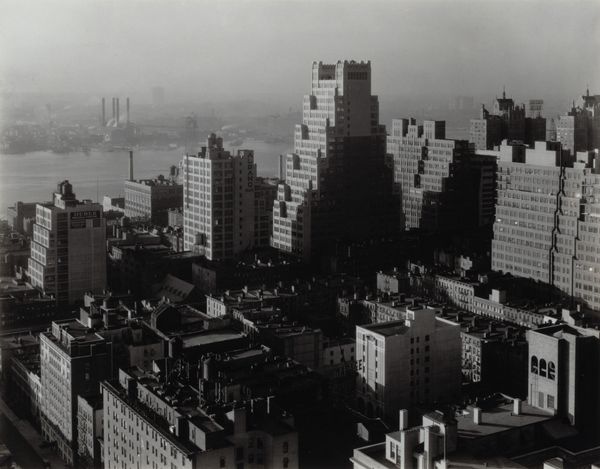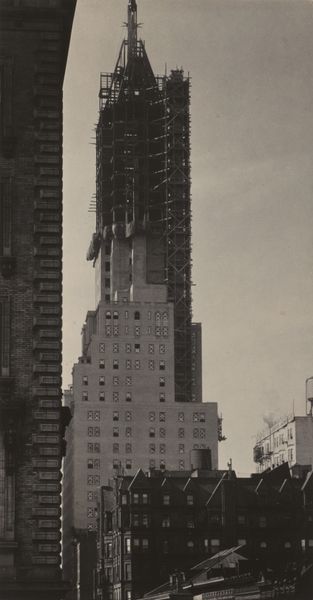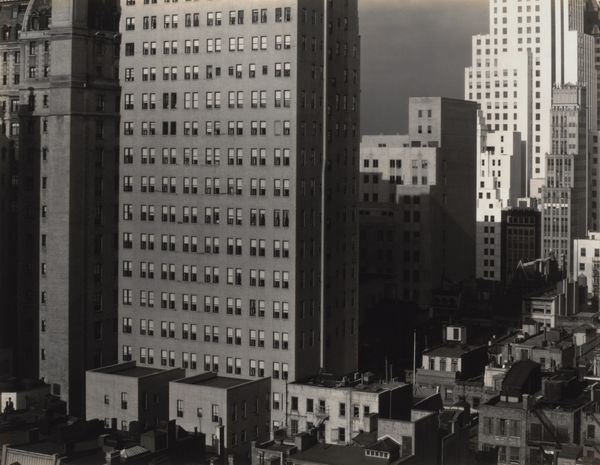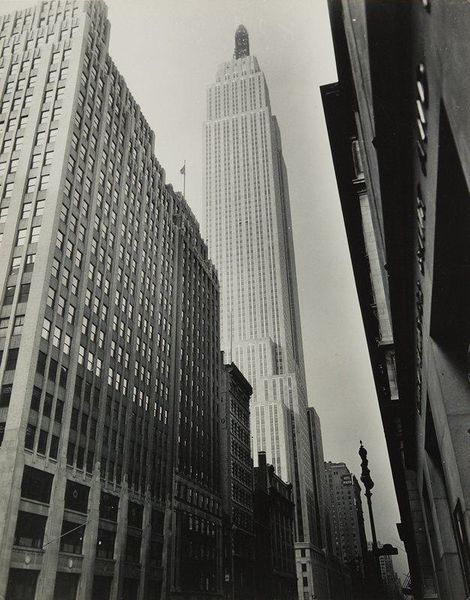
photography
#
street shot
#
street-photography
#
photography
#
street photography
#
pop-art
#
cityscape
#
realism
Dimensions: image: 23.3 × 15.5 cm (9 3/16 × 6 1/8 in.) sheet: 25.2 × 18.7 cm (9 15/16 × 7 3/8 in.)
Copyright: National Gallery of Art: CC0 1.0
Curator: It's always intriguing to observe how a city is represented in art. This is "West 28th Street, New York", a 1963 photograph by David Vestal. Editor: There's a starkness to it, almost bleak. The towering buildings seem to dwarf the figures below, creating a feeling of urban alienation, like they are a threat looming on every corner. Curator: The realism feels almost documentary. Notice the water towers atop the buildings, they become a recognizable symbol of old New York City architecture. Vestal wasn't just capturing a scene; he was preserving a vanishing cityscape, a tangible link to a bygone industrial era. They signify something beyond the image, you know. Editor: Yes, beyond pure documentation, there's something powerful in capturing these buildings, with all of the weight they had on shaping that area. They visually dominate the photograph. The almost complete absence of sky contributes to that weight. Curator: The lack of color amplifies that somber mood. It seems as though the stark contrasts point back to an underlying tension between the city's ambition, and maybe the sometimes grim reality for the everyday person. Editor: Do you think the cars signify anything other than transportation of everyday folks? What about class? Curator: Oh, definitely. While utilitarian, automobiles signify social mobility, personal freedom, status. They provide visual cues about social context. They almost become icons for where individuals place themselves in the rapidly evolving post-war economic landscape. The automobiles almost juxtapose the architecture. Editor: It seems a little claustrophobic. Yet the human element, the few figures captured mid-stride, provides a flicker of dynamism. Despite it, a strange loneliness hangs over it all. The arrangement invites interpretation on societal values. Curator: Vestal, through his lens, invites us to examine the symbolic power inherent in our urban environments. These photographs ask what our evolving relationship with them is, in a changing landscape. Editor: It truly shows a moment in time where industrial America tried its hardest.
Comments
No comments
Be the first to comment and join the conversation on the ultimate creative platform.
